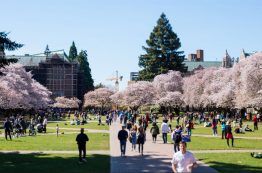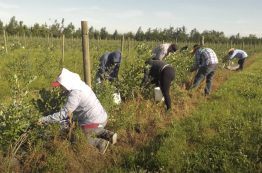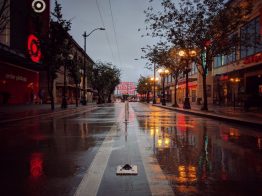We’re constantly impressed at the ingenuity and resilience of College of the Environment students. Now that we have all had time to adjust to this new way of living, we checked in with four students at the College to see how their studies and work lives have changed, hear about the challenges and opportunities they have found in online courses and listen to how they’re taking care of themselves in the era of COVID-19.
Read more »Antarctic sea-ice models improve for the next IPCC, UW study shows
The world of climate modeling is complex, requiring an enormous amount of coordination and collaboration to produce. Models feed on mountains of different inputs to run simulations of what a future world might look like, and can be so big — in some cases, lines of code in the millions — they take days or weeks to run. Building these models can be challenging, but getting them right is critical for us to see where climate change is taking us, and importantly, what we might do about it.
Read more »Agricultural pickers in US to see unsafely hot workdays double by 2050
The global pandemic has put a focus on essential workers, those we rely on for basic services. Workers who pick crops, from strawberries to apples to nuts, already face harsh conditions harvesting in fields during summer harvest months. Those conditions will worsen significantly over the coming decades. A new study from the University of Washington and Stanford University, published online in Environmental Research Letters, looks at temperature increases in counties across the United States where crops are grown.
Read more at UW News »Ships’ emissions create measurable regional change in clouds
A container ship leaves a trail of white clouds in its wake that can linger in the air for hours. This puffy line is not just exhaust from the engine, but a change in the clouds that’s caused by small airborne particles of pollution. New research led by the University of Washington is the first to measure this phenomenon’s effect over years and at a regional scale.
Read more at UW News »What does a hot day in Bali have to do with a dry day in Seattle?
Consider this: the U.S. West Coast has seen a decrease in rainfall between 1981-2018. UW scientists think a phenomenon called the Madden-Julian Oscillation (MJO) might be to blame. A stormy disturbance that occurs several times a year in the tropics, the MJO is similar to the El Nino Southern Oscillation, which is notorious for generating extreme winter weather in the Pacific Northwest.
Read more at Nature »





